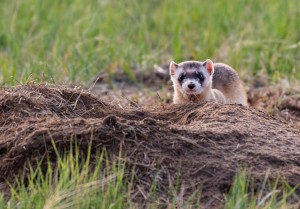오늘의 한마디
Cloned Ferret Offers Hope for Endangered Species
Have you ever wanted to clone yourself? Maybe you thought, “While I play video games, my clone can do all my chores!” Well, if you are a black-footed ferret, it’s your lucky day. (But, we’re pretty sure black-footed ferrets don’t play video games.)
In December 2020, the weasel world welcomed a cloned black-footed ferret named Elizabeth Ann. She became the first of any endangered native North American species to be cloned. In a few years, Elizabeth Ann might have siblings. The successful cloning is promising, because it offers hope that cloned animals could help save species from extinction. Extinction occurs when every member of a species of a living thing has died.
In the past, black-footed ferrets lived throughout much of the Great Plains. They depended on hunting prairie dogs for food and lived in the prairie dogs’ underground burrows. Since the late 1800′s, however, ranchers have eliminated prairie dogs from much of the Great Plains because they consider the animals to be pests. The black-footed ferret has become rare as a result of the decline in prairie dogs. Disease and the loss of rangeland to agriculture have also reduced the ferret’s numbers. Scientists once thought black-footed ferrets were extinct.
In 1981, ranchers in Wyoming discovered a population of more than 125 black-footed ferrets. Over the next several years, many of these animals died of a disease called distemper. To keep them from dying out completely, the U.S. Fish and Wildlife Service and the Wyoming Game and Fish Department captured the remaining animals. Scientists have successfully bred the ferrets in captivity. In 1991, they began releasing captive-bred ferrets into western grasslands that were home to prairie dog populations. The ferrets began reproducing again in the wild.
The black-footed ferret is not the first animal to be cloned. Scientists used a technique called nuclear transfer to clone such amphibians as frogs and salamanders as early as the 1950′s. In 1996, a group led by the British scientist Ian Wilmut used the procedure to clone a sheep. The sheep was the first mammal cloned from a donor cell from an adult mammal. They named the clone “Dolly.” Since the cloning of Dolly, scientists from many countries have used a similar technique to produce clones of mice, cattle, cats, and other mammals.
https://www.worldbookonline.com/student/behindheadline?p=45954
